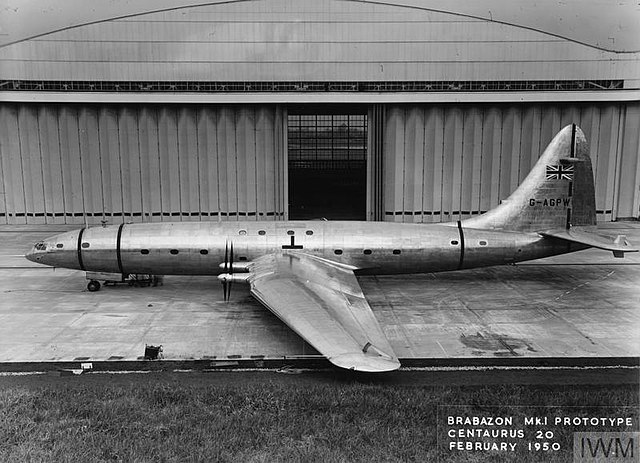 “Talking Transportation”
“Talking Transportation”
By Jim Cameron
Imagine a double-deck airplane with wings wider than a 747, sleeping berths, a sit-down restaurant and a separate movie theater, all designed to serve just 60 passengers crossing the Atlantic. Such a plane was built in 1949, but it never was adopted by the airlines.
Built not by Boeing and long before Airbus even existed, the Brabazon was the creation of the UK company Bristol (and named after the government committee that dictated its specifications), a company best known for its heavy bombers in WWII. But the Brabazon’s design was inspired more by cruise ships than aircraft.
Catering to the well-healed passengers who’d otherwise opt for a luxury sea voyage, this beast was designed to pamper, not provide low cost travel. And pamper it did, with private sleeping compartments with true beds (not just lie-flat seats) and a sit-down restaurant with a kitchen for preparing real meals aloft. Continuing aft there was a cocktail bar for pre-dinner drinks and at the rear of the plane, a 23-seat movie theater.
The Brabazon had a fully pressurized cabin complete with air conditioning. It was so powerful that, despite weighing 130 tons (vs 200 tons for a 747), it could fly non-stop from London to New York even against the prevailing winds. That was an impressive feat given that most flights going west, back then, had to stop for refueling at Gander in Newfoundland.
The jumbo was powered by eight piston engines, operating four counter-rotating propellers guzzling 16,000 gallons of fuel. But mighty as it was, in its day, the Brabazon could only fly at 250 mph, meaning the trip across the pond would take 14 hours cruising at only 25,000 feet… low and slow. (Today a London to New York flight takes about eight hours).
Even though they’d been collaborating with Bristol on the Brabazon’s design, even BOAC wasn’t interested in the new plane. One reason… “The Comet”, the first commercial jetliner built by UK-rival de Havilland, which took its first test flight just months before the Brabazon. The Comet could carry about 40 seated passengers at a smoother 42,000 feet and a much faster 400 mph.
Mind you, the Comet had its own problems when three of the craft suffered mid-flight disintegrations due to metal fatigue… never good for business.
The jet age had arrived and the Brabazon, a worthy competitor to cruise ships in decades past, was just the wrong plane at the wrong time. Though the plane dazzled crowds at the Farnborough and Paris air shows, there were no orders. By 1953 the few demonstration planes that had been built were sold for scrap and the £6 million development cost was written-off.
A few months later, the Comet was one-upped by Boeing which rolled out its four-engine jetliner the Dash 80, predecessor of the 707. Air travel became affordable to all, not just the ultra-rich who expected luxury meals, bedding and a movie in their cruise ship in the sky.
Jim Cameron is founder of the Commuter Action Group and advocates for Connecticut rail riders. His weekly column “Talking Transportation” is archived here. You can contact Jim at [email protected].”

